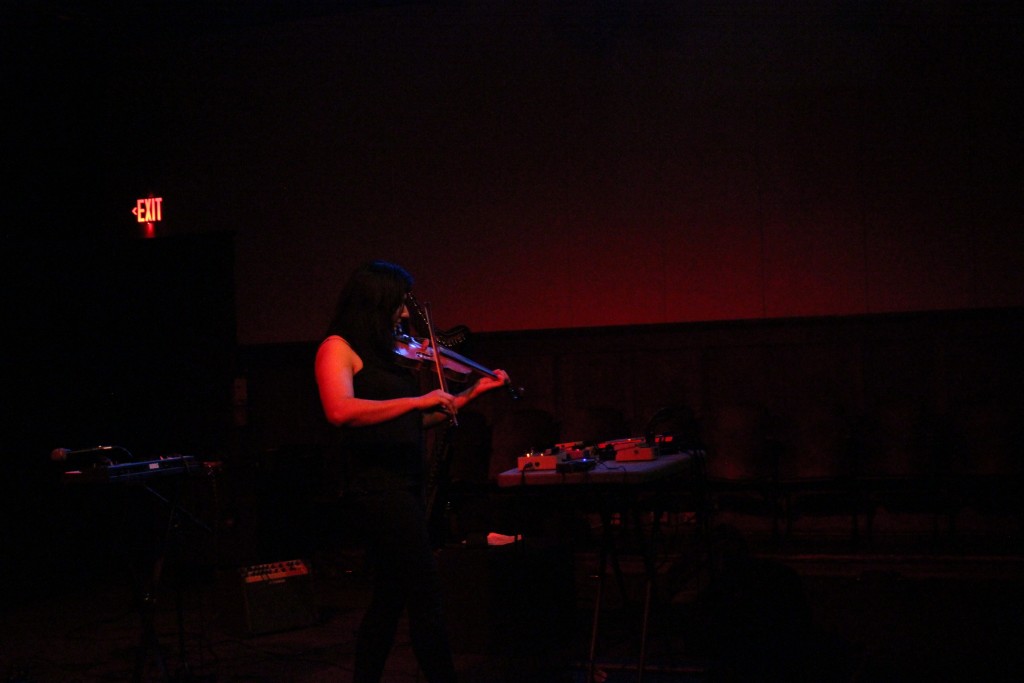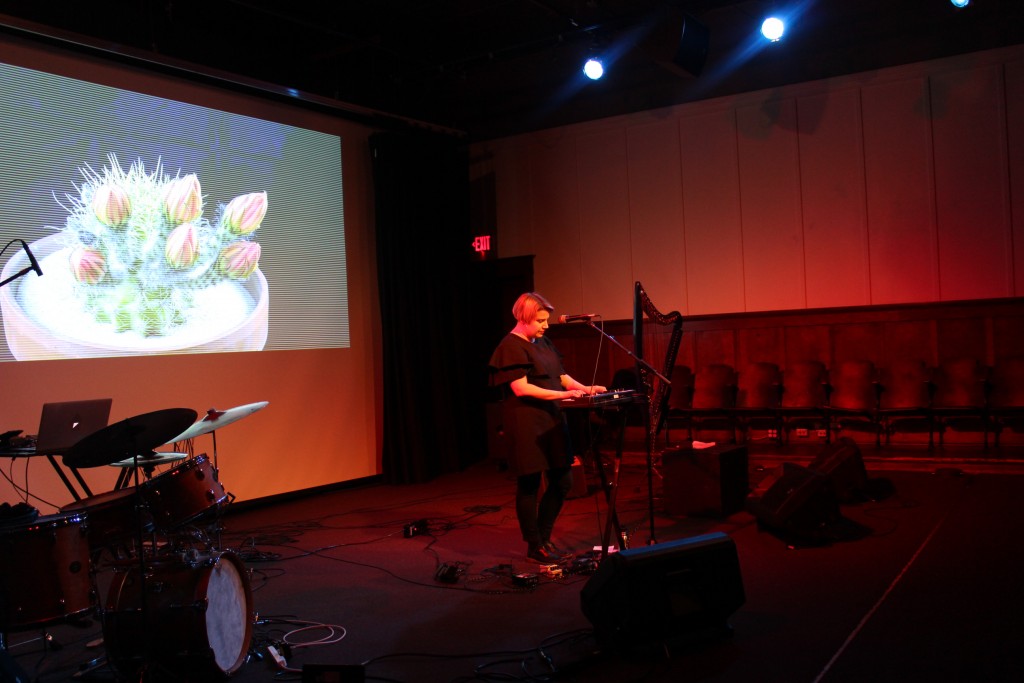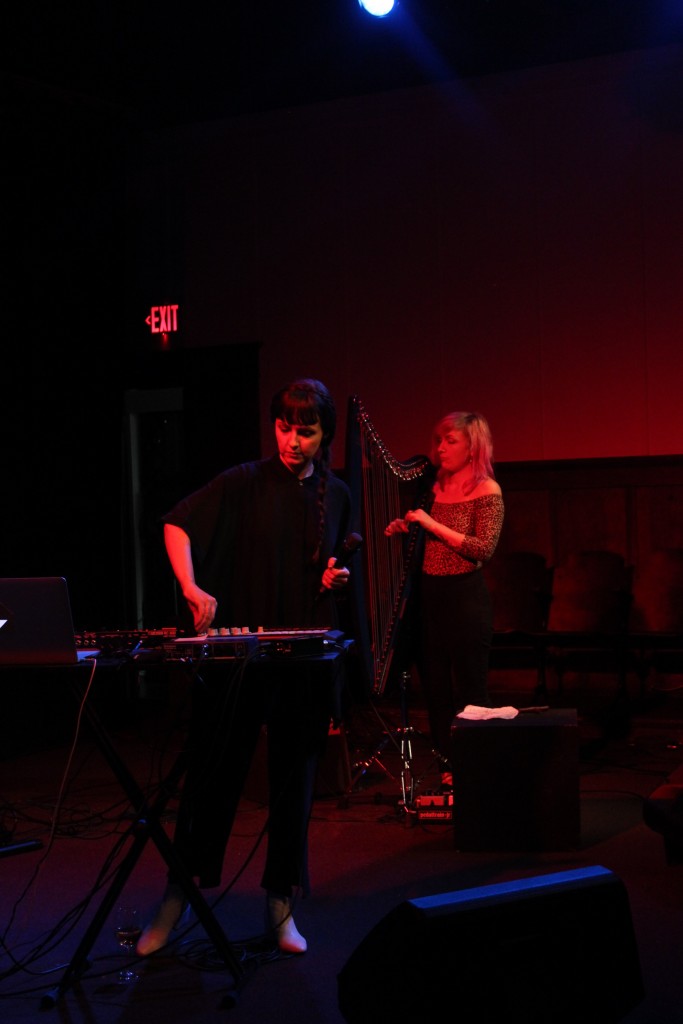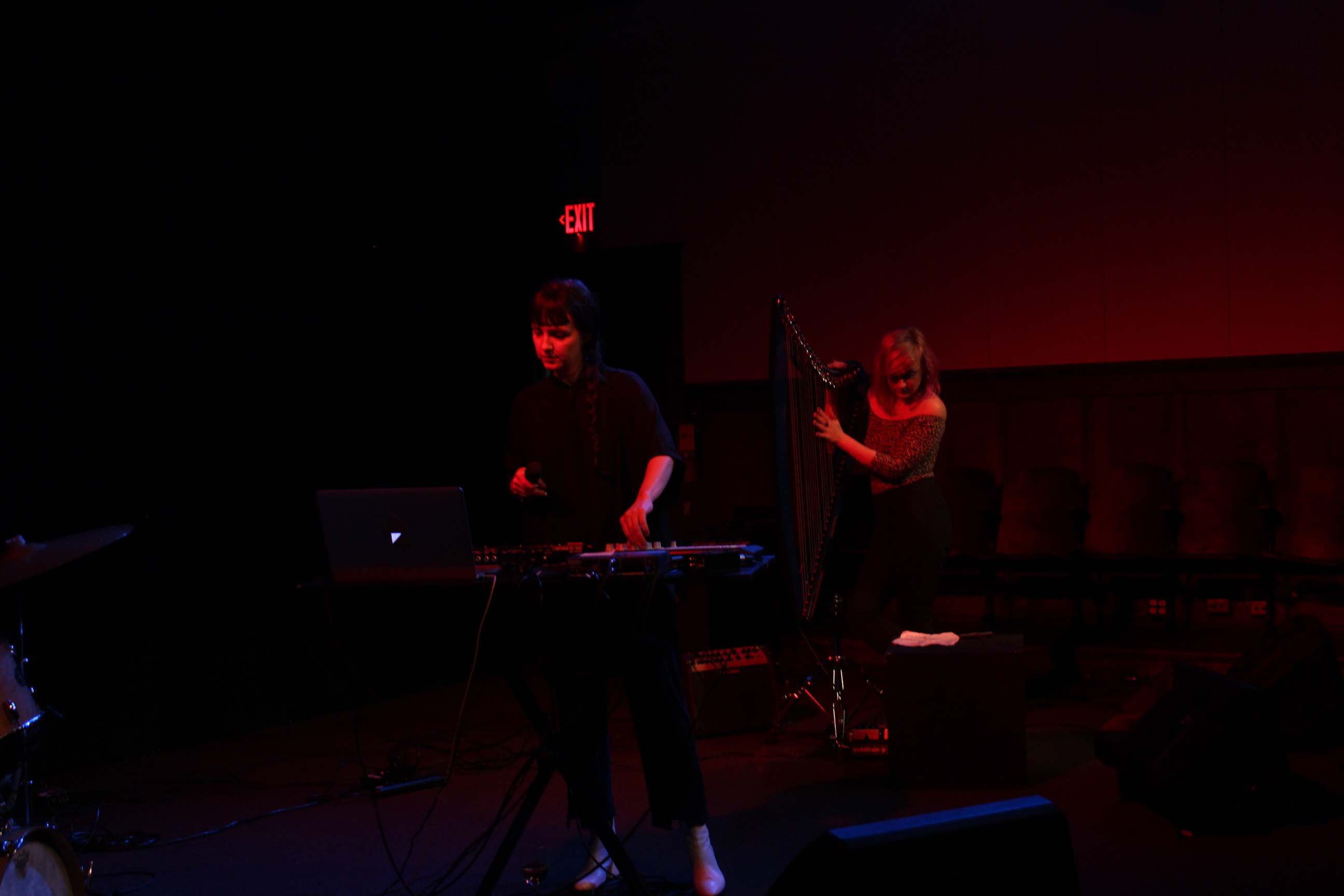Stopping at the merch table on my way into the Grand Luxe Hall of the Western Front, I inspected Lief Hall’s latest cassette. An image of a woman in white robes rising off the misty floor, with candles burning in front of her covered it — an image I would later realize that was taken from the accompanying music video.
I sat down inside the dark, wood-panelled hall. The lights dimmed. With drinks in hand, people sat with susurrous anticipation for the show to begin.

The Nausea, Anju Singh’s experimental noise project, performed first. Singh created a metallic, dark atmosphere by looping long, drawn out notes on her violin. The drone was overbearing. The soundscape bled the ear. Her creation was a symphonic composition of screeching blackness.
The following performance was the antithesis of Singh’s. Kellarissa, the indie pop project of Larissa Loyva, was a blend of classically trained vocals and soft synthesizer — it was calming, especially after the aural onslaught on The Nausea. Behind her, a screen displayed an ever-changing two-dimensional cacti animation throughout the set.

After a brief intermission, the music video for Lief Hall’s single, “Roses for Ruin” began, with only slight technical difficulties. This past summer, Hall and her collaborator, Julia Hutchings, traveled to the interior of British Columbia to film. Mountains with wintry grey clouds and evergreen trees welcome Hall in a cream dress and dark brown hair, standing atop a Jersey barrier of a campestral highway. The video features a recurring motif of reversed film — Hall emerging from a bath with dry hair, a motorcyclist driving forward descending a hill and the familiar image of a the woman rising from the misty floor. The scenes change rapidly and feel disjointed and scattered. In spite of this, the film’s somber atmosphere perfectly suits the mellifluous ambience of Hall’s electronic pop single.

After the video and warm applause, Hall took to the stage, accompanied by drummer, Kevin Romain, and harpist, Elisa Thorn. With her talented backup, Hall’s set, rife with lyrical harmonies and phantasmagoric atmosphere, was highly enjoyable. She performed several songs — all of a similar style, evoking a feeling of floating in space. The drums and harp added vigour to the dreamlike quality of her songs and though her music was unvaried — persistently within this ethereal air — the audience was absorbed, happily floating within the dark space flow and empyreal beat of her music.
Then, the music stopped and the listener returned to earth. Her performance was short. It would have been nice to float a while longer.


